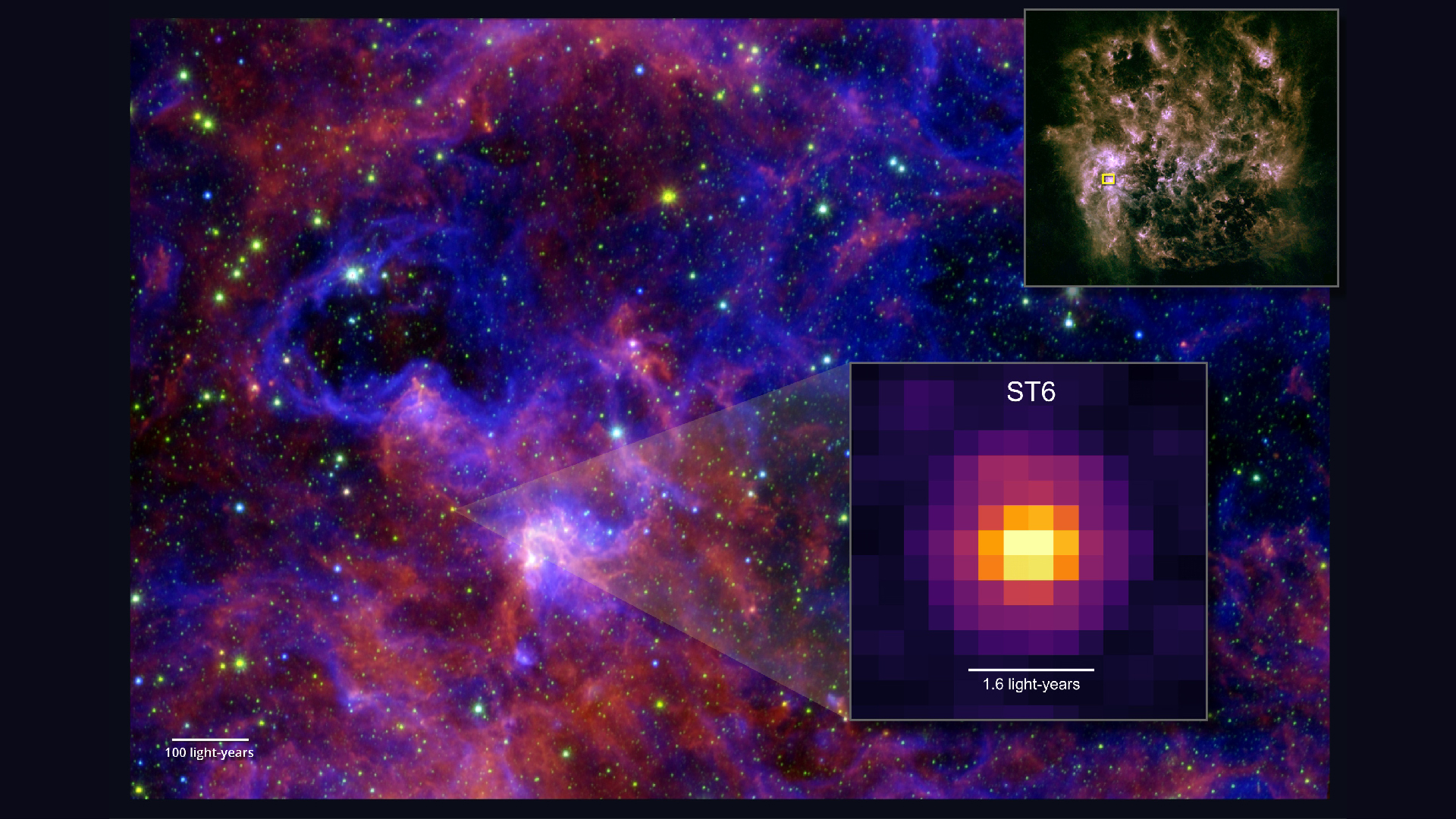Building blocks of life detected in ice outside the Milky Way for first time ever
New observations from the James Webb Space Telescope have uncovered five complex organic molecules trapped in the ice around a star outside our galaxy. This cosmic first hints that the stuff of life may be widespread throughout space.

For the first time, scientists have spotted multiple complex building blocks of life in the ice around a star outside the Milky Way.
Using the James Webb Space Telescope (JWST), researchers detected five large, carbon-based compounds around a protostar in the Large Magellanic Cloud, a small galaxy that orbits closely to the Milky Way. The findings could help scientists learn how complex molecules formed in the early universe, according to a study published Oct. 20 in the Astrophysical Journal Letters.
The Large Magellanic Cloud is a dwarf galaxy 160,000 light-years from Earth in the Local Group, a collection of gravitationally bound galaxies that includes the Milky Way. The Large Magellanic Cloud is filled with hot, luminous stars that flood it with ultraviolet radiation. It also has fewer elements heavier than helium than the Milky Way does. These conditions make it similar to those expected in galaxies in the early universe.
"What we learn in the Large Magellanic Cloud, we can apply to understanding these more distant galaxies from when the universe was much younger," study co-author Marta Sewilo, an astronomer at the University of Maryland and NASA's Goddard Space Flight Center, said in a statement. "The harsh conditions tell us more about how complex organic chemistry can occur in these primitive environments where much fewer heavy elements like carbon, nitrogen and oxygen are available for chemical reactions."
In March 2024, the researchers pointed the JWST at a developing star, dubbed ST6, in the Large Magellanic Cloud. Using instruments that measure infrared light, they discovered five complex carbon-based molecules in the ice around the star: methanol, acetaldehyde, ethanol, methyl formate and acetic acid.
Of the five molecules, only methanol has been previously detected in protostars outside the Milky Way. Acetic acid, the main component in vinegar, had never even been conclusively found in space ice before.
"Before Webb, methanol had been the only complex organic molecule conclusively detected in ice around protostars, even in our own galaxy," Sewilo said. "The exceptional quality of our new observations helped us gather an immense amount of information from a single spectrum, more than we've ever had before."
Get the world’s most fascinating discoveries delivered straight to your inbox.
The researchers also found signals that might be caused by a chemical called glycolaldehyde, although further study will be needed to confirm its presence. Glycolaldehyde can react with other molecules to form a type of sugar called ribose, an important component of ribonucleic acid (RNA), which is essential for life.
Finding such complex molecules in the Large Magellanic Cloud suggests that chemical reactions on the surfaces of dust grains can produce complex molecules even under harsh conditions, the researchers said. In future studies, the team plans to look for these and similar molecules around other protostars, both in the Milky Way and in nearby galaxies.
"With this discovery, we've made significant advancements in understanding how complex chemistry emerges in the universe and opening new possibilities for research into how life came to be," Sewilo said in the statement.

Skyler Ware is a freelance science journalist covering chemistry, biology, paleontology and Earth science. She was a 2023 AAAS Mass Media Science and Engineering Fellow at Science News. Her work has also appeared in Science News Explores, ZME Science and Chembites, among others. Skyler has a Ph.D. in chemistry from Caltech.
You must confirm your public display name before commenting
Please logout and then login again, you will then be prompted to enter your display name.


